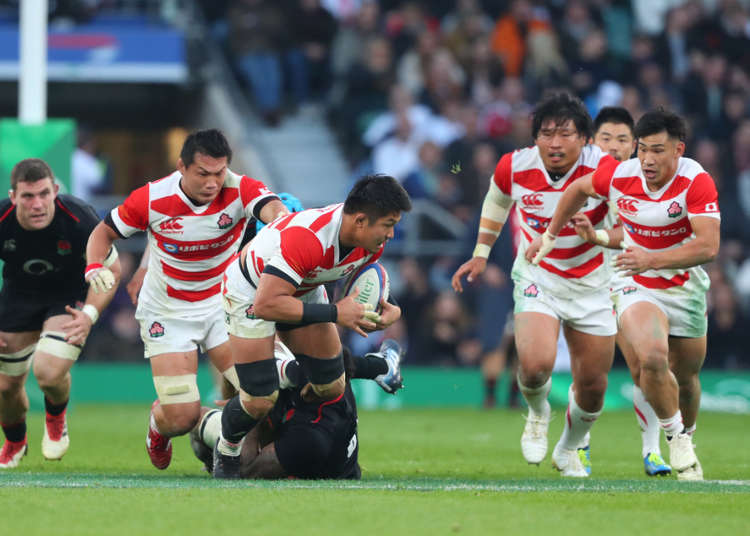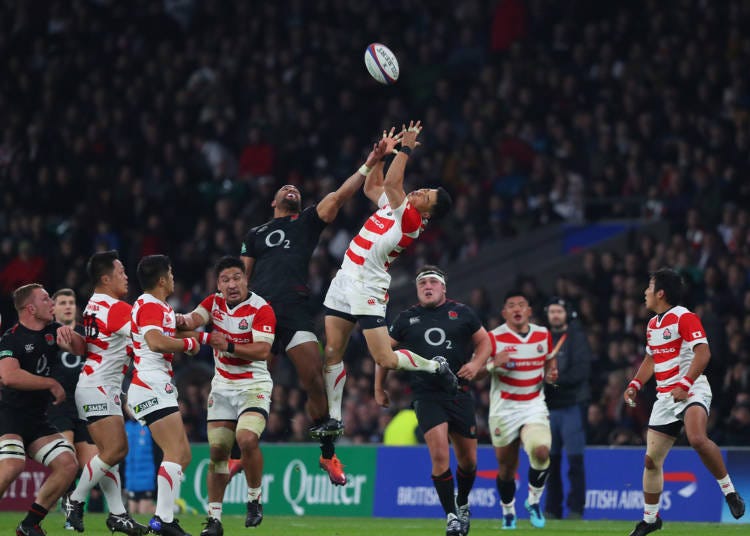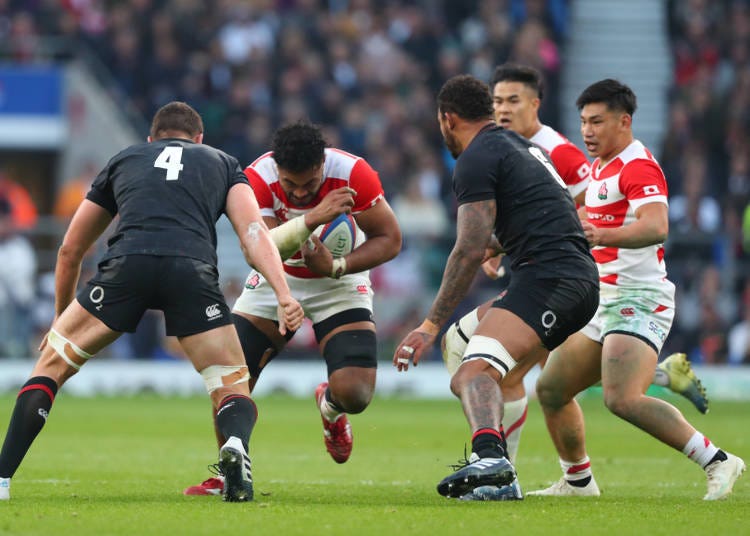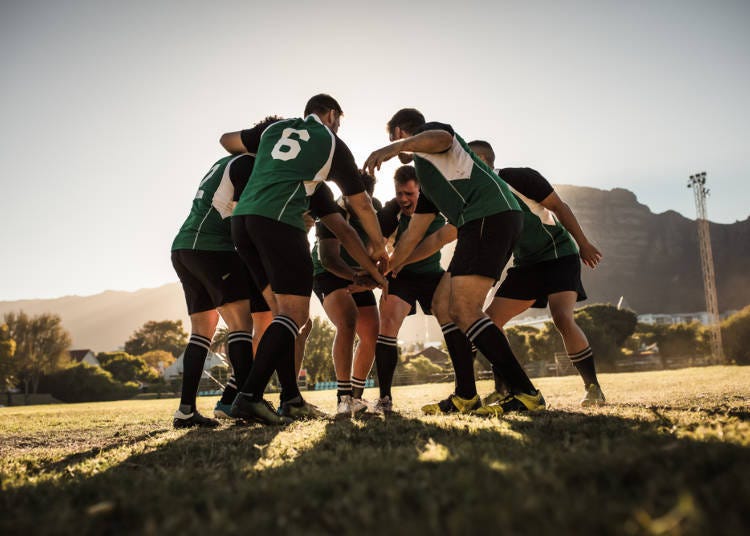
When Japan's rugby team triumphed over South Africa in the 2015 Rugby World Cup, it ignited a nationwide passion for rugby. Since then, the sport's popularity has soared, with record-breaking spectator numbers during the 2015-2016 season. Japan even hosted the prestigious Rugby World Cup in 2019, further cementing its status as a rugby-loving nation.
Rugby, rich in history and excitement, stands alongside baseball and soccer in the hearts of Japanese sports fans. Major professional leagues and college tournaments draw enthusiastic crowds eager to support their teams.
In this guide, we'll share our insights as a dedicated rugby fan, covering the sport's history, key venues, the Japanese national team, and standout players. You'll also find a simple breakdown of the game's rules, positions, and scoring, making it easy for even newcomers to enjoy rugby.
- Table of Contents
-
- 100 Years of Rugby in Japan
- Chichibunomiya, Hanazono, and Other Major Rugby Venues of Japan
- Japan's National Rugby Team Versus the World
- Japan National Rugby Union Team's Play Style
- The Blue-Eyed Warriors Bearing the Japanese Spirit
- The Best-looking, Brave Blossoms
- 12 Super Fundamental Rules You Should Know Before Spectating
100 Years of Rugby in Japan

During the time period when there were no professional or company sports yet, Japan's sports fans turned to college sports to scratch their itch. Western sports were introduced by Western teachers and specialists (and later their offspring) who had been invited to Japan during the Meiji era (1868 to 1912), and they naturally found a home in the colleges these ones worked in. Rugby was one of those sports. It was introduced by Clark, an English teacher from Great Britain, who taught the sport to his students. Twenty-seven years after he laid that foundation, the Japan Rugby Football Union was born.
After the Pacific War ended, the development of sports became the hope and beacon of Japan's post-war rebuilding. Rugby especially spearheaded the redevelopment of sports by holding a match on the month immediately after the war ended, ahead of every other sports, thereby fulfilling an important role in rebuilding efforts.
Tokyo's Keio University, Waseda University, Meiji University, and Kyoto's Doshisha University are historically known for being strong rugby competitors, and many athletes from the Japanese national team hailed from these university teams. Any match that pit two of these four major college teams against each other was a highly-anticipated event by fans of the sport, both in times past and recent years.
The premier rugby league in Japan, Japan Top League, started in the year 2003 after the Adult League and Regional Leagues were merged. Right now, there are 16 teams from all over the country enrolled in the league.
Chichibunomiya, Hanazono, and Other Major Rugby Venues of Japan

There are two long-established major rugby union sporting venues in Japan, also known as "Japan's Rugby Sanctuaries". One of it is the Chichibunomiya Rugby Stadium in Tokyo that was built in 1947, and the other is Osaka's Hanazono Rugby Stadium, built in 1929. Both stadiums feature an exclusive rugby playing field - an uncommon sight for stadiums in Japan - where exciting clashes between strong teams can often be witnessed.
A new "sanctuary" for the sport may well be on its way to being recognized - the Kamaishi Recovery Memorial Stadium that opened in 2018. Located in Iwate Prefecture's Kamaishi City, known as a "rugby city" because it is home base to a top-class rugby union football team, this is also an area that had been devastated by the 2011 Tohoku Earthquake. The new stadium is built on top of the site of an elementary school that was destroyed during the earthquake, and also serves as a facility to remember the history of that disaster.
Japan's National Rugby Team Versus the World

The men's Japan national rugby team represents Japan on the world stage, competing in international tournaments where national prestige is at stake. Each time, more than 30 active players from the Top League are recruited for the squad, and 23 athletes from this squad are eventually picked for the national team.
In April 2019, Japan's rugby team was the top rugby team in the Asia region, with a world ranking of 11th place. The team's nickname is "The Brave Blossoms," and their uniform features red and white horizontal stripes with an emblem patterned after the sakura, or cherry blossom flower. Their current head coach is Jamie Joseph, a New Zealander who was formerly a Japan national rugby team player himself.
The Japan national team has qualified for the Rugby World Cup ever since its inception in 1987, with career statistics of 4 wins, 22 losses, and 2 draws. Three of those wins were during the 2015 World Cup, when the Goromaru Boom—named after fullback Ayumu Goromaru for his instrumental roles in the victories—exploded in Japan, especially when Japan defeated South Africa in a game widely described as "the greatest upset in the history of rugby union," leaving powerful impressions on people's minds.
Japan National Rugby Union Team's Play Style
Rugby powerhouse countries like New Zealand, Wales, England, and South Africa have players that are physically stronger than Japan's players. Trying to break into the top 10 international ranking of any sports is said to be exponentially challenging, and Team Japan is constantly tackling this difficult hurdle while thinking of ways to defeat teams with taller and heavier players than its own team.
There can be significant differences in team strategies depending on who the head coach is. For example, former Japan head coach Eddie Jones relied on a variety of momentum passes to creep forward with much effort. In contrast, current head coach Joseph prefers to cut deep into enemy territory with long kicks and avoid as much body contact as possible.
The Blue-Eyed Warriors Bearing the Japanese Spirit

The International Rugby Football Board allows foreign-born players to represent countries they do not hold citizenship for. This may seem unusual if you're not familiar with rugby, but even major teams like England and Australia often draft foreign players into their ranks.
There are conditions, of course. For example, the foreign-born player must have lived for a certain time in the country they intend to represent, and they must not have represented any other countries in the sport before. One of Team Japan's legends came from New Zealand when he was only 23, and represented Japan for a total of 64 matches. The strength and experience of these foreign-born talents have grown to become indispensable assets of Japan's national team.
The load Japanese and foreign-born athletes have to bear in rugby is the same. After all, rugby is by nature a grueling sport where players clash into each other during scrums, and the road to victory is paved by large and powerful men breaking down the other team's iron-clad defenses with fearless charging. Of course, that's also a major part of what makes the sport exciting to fans and spectators in the first place!
The Best-looking, Brave Blossoms

The list of handsome and ruddy rugby players includes old-timers such as Seiji Hirao and more recently, Ayumu Goromaru. What's more, the current Brave Blossoms team has been touted as the best-looking Japan national team since its inception.
Especially popular among this team of good-looking athletes are Kenki Fukuoka, Yu Tamura, Ryoto Nakamura, Kazuki Himeno, and Rikiya Matsuda. Let's also not forget Samoan-born Timothy Lafaele, a fine-looking gentleman whom many have even compared to the likes of - believe it or not - Keanu Reeves!
12 Super Fundamental Rules You Should Know Before Spectating

Basic Rules
1) Each team has 15 players. They are generally split into eight forwards and seven backs.
2) Both teams face each other at the start of the match, and the goal is to bring the ball into enemy territory.
3) Running with the ball is allowed.
4) The match is split into two halves of 40 minutes each, totaling 80 minutes.
Scoring
5) There are four ways to score: Try, conversion, penalty, and drop goal.
6) Try: Grounding the ball in the in-goal area earns the team five points.
7) Conversion: After scoring a try, kicking the ball between the goalposts earns the team two more points.
8) Penalty: When the opponent makes a rule infringement, for example, by executing a dangerous tackle, the other team can choose to kick the goal and score three points if successful.
9) Drop goal: Players can also score three points by dropping the ball onto the ground during play and kicking it into the goal on the half-volley.
Rule Violations
10) Knock-on: When a player makes contact with the ball and the ball goes forward.
11) Throw forward: Passing the ball to a teammate in front.
12) For minor offences like knock-on and throw forward, the sanction is a scrum. In a scrum, the forwards of both teams face each other to restart play with a contest for ball possession.
Keep these rules at the back of your mind while watching your first rugby union match for maximum enjoyment, and let's all support the Japan rugby union team together!
Main image(c)Mitch Gunn / Shutterstock.com
A full-service editorial production team that handles everything from planning, editing, coverage, and writing, for all types of media, including booklets, books, websites, and events, plus everything from media launch, to stuffing and delivery.
- Area
- Category
*Prices and options mentioned are subject to change.
*Unless stated otherwise, all prices include tax.
Popular Tours & Activitiess
Recommended places for you
-

MARUNOUCHI Bike&Run
Other Sports
Tokyo Station
-
Events

Tokyo Tower
Landmarks
Roppongi
-

The Imperial Palace
Other Architecture
Tokyo Station
-

Raffine Running Style Otemachi One
Other Sports
Tokyo Station
-

The Tokyo Station Marunouchi Building
Landmarks
Tokyo Station
-

Raffine Running Style Neo
Other Sports
Ginza
-
Ad

Ohta’s Isan Gets a Refresh: Introducing the New Ohta’s Isan S and Ohta’s Isan <Sachet> S with Updated Packaging and Improved Benefits
-

The Ultimate Guide to Mitsui Outlet Parks in Japan (2025 Edition) - Popular Tax-Free Malls & Coupon Info for Travelers
by: Guest Contributor
-
Ad

Feeling Unwell While Traveling? HOTEL de DOCTOR 24 is Japan's Sole 24-Hour Online Medical Consultation Service
-

A Don Quijote Like No Other: Step Inside the All-New Tourist-Friendly Store at Shinjuku Tonanguchi Bekkan
by: Chehui Peh
-
Ad

Okinawa Travel Troubles? Guide to the MCC Hotline for Illness and Weather Emergencies
-
Ad

Get Your Perfect Custom Suit at GINZA Global Style PREMIUM Ginza Honten: Choose from 5,000 Fabrics, Starting at 26,400 Yen (incl. tax)!
Inspiration for Accommodations
-

Enjoy Mt. Fuji from the Comfort of Your Room! Recommended Ryokan with Mt. Fuji View
-

Stay Near the Cherry Blossoms! Hotels for Cherry Blossom Viewing in Tokyo
-

Family-Friendly Hotels with Free Shuttle to Disneyland: Convenient Access for a Magical Stay
-

Top Ranked Hakone Hotels with Mt. Fuji View: Enjoy Stunning Scenery from Your Private Space
-

Convenient Tokyo Hotels with Airport Shuttle: Ideal for Families and Heavy Luggage
-

Stunning Tokyo Tower View Hotels: Enjoy Spectacular Scenery from Your Private Space
-

Convenient Asakusa Hotels with Kitchens: Ideal for Extended Family Visits
-

Experience Luxury: Hakone's 10 Best Five-Star Accommodations
-

Enjoy Mt. Fuji Autumn Leaves! Top Hotels Near the Popular Autumn Leaves Corridor
-

Experience Hakone Fall Foliage from Your Room with Stunning Views
-

Enhance Your Rugby Viewing Experience with These Fascinating Japan Rugby Union Facts
by: Medium Inc.
-

Shibuya Crossing: Getting the Best View from the Deck at Magnet by Shibuya109!
-

10 Important Japanese Phrases to Know Before You Enter a Japanese Convenience Store!
by: Teni Wada
-

Tokyo Gearing Up For 2019 Rugby World Cup and 2020 Olympics
-

Easy Day Trip from Tokyo! Ultimate Sightseeing Guide for Hakone & Lake Ashinoko!
-
Ad

Take Me Out to the Ball Game – Japanese Style! Catching a Baseball Game During Your Tokyo Visit
- #best ramen tokyo
- #what to buy in ameyoko
- #what to bring to japan
- #new years in tokyo
- #best izakaya shinjuku
- #things to do tokyo
- #japanese nail trends
- #what to do in odaiba
- #onsen tattoo friendly tokyo
- #daiso
- #best sushi ginza
- #japanese convenience store snacks
- #best yakiniku shibuya
- #japanese fashion culture
- #best japanese soft drinks













